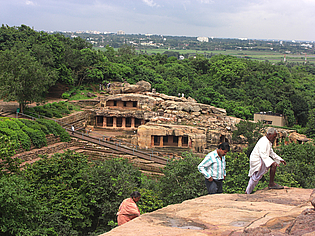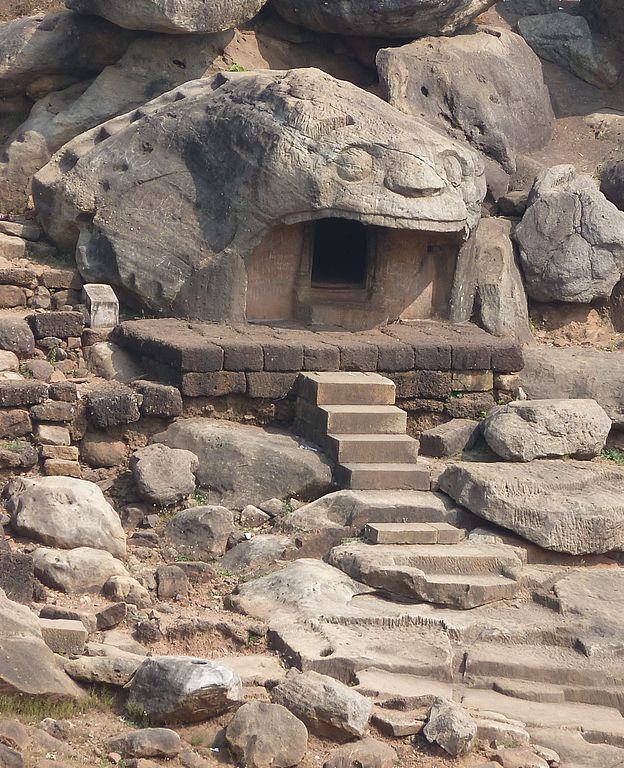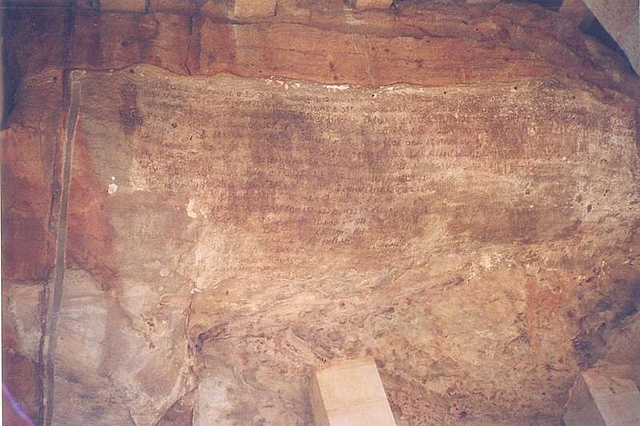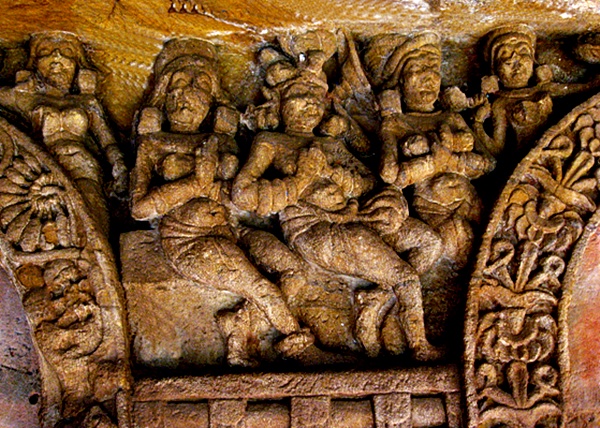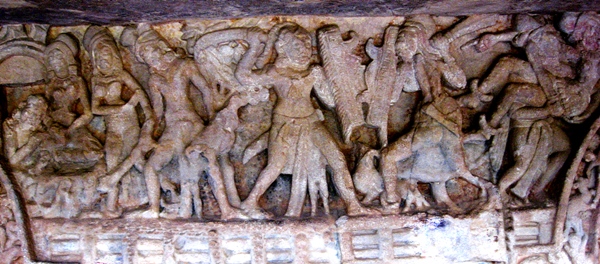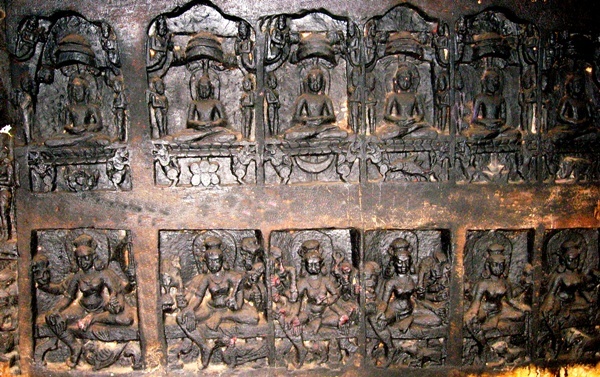
Archaeological Survey Of India
The twin hills Udayagiri and Khandagiri (Lat. 20.16 N; Long. 85.47E) are located in the vicinity of Bhubaneswar town. The National Highway No.5 passes through the close proximity of the hills. These two hills represent one of the earliest groups of Jaina rock-cut architecture in eastern India in the field of architecture, art and religion. These caves were first brought to the notice by A. Stirling in 1825 A.D.
Rising abruptly amidst a wide expanse of arid lateritic soil both the hills separated from each other by a narrow row through which passes modern road between Bhubaneswar and Chandaka. The ancient names of the twin hills of Udayagiri and Khandagiri are Kumari and Kumara parvatas respectively.. There are total 33 rock cut caves on both the hills out of which 18 caves are excavated on Udayagiri hill while 15 are on the Khandagiri hill. Generally caves are single storied but a few of them are double storied also.
These hills are honeycombed with excavated rock-cut caves, essentially meant for the dwelling retreats of the Jaina recluses. On the basis of inscriptional evidences, these caves were first excavated by king Kharavela of Chedi dynasty and his successors who were devout Jainas during the first century B.C. The Jaina occupation was continued here with occasional breaks down to the present day. The Jain temple on the top of the Khandagiri hill was constructed in late 19th century is under worship even at present, preserving the continuity and tradition of the glorious past of the hill.
The crest of Khandagiri on which Jaina temple stands, is 37.5 m high, 3.96 m higher than that of Udayagiri. The substance of the rock is coarse-grained sandstone of a varied texture. However, later on, these sandstones were duly exploited by the temple builders of Bhubaneswar during medieval period.
Meant for the residence of Jaina ascetics noted for their self mortification, the caves provide a little amenities. Most of the caves consist of a row of cells open either directly to the verandah or to the open space in front. These are essentially dormitories, an inference substantiated by a sloping rise of the floor to serve the purpose of a pillow. The doorways of the cells have pilasters on either side with crowning animal figures and arches over them are decorated with flowers, creepers and animal motifs. The sculptural and decorative art of the caves include panels/friezes depicting popular legends, historical episodes, religious observances, dancing performances. Besides, individual guards, bracket figures, vidyadharas, floral and geometrical patterns are noteworthy. The artistic embellishment in the early caves of Udayagiri-Khandagiri appear to have displayed a decided advance on the work of Bharut and Sanchi of Madhyadesa.
Ranigumpha and Swargapuri-Manchapuri caves are double storied and the largest in size. Ranigumpha or the queen’s palace is the architectural marvel of the entire complex. Though, architecturally the Hathi gumpha is insignificant but its historical importance lies to the famous inscription of king Kharavela engraved on its brow. The 17 line inscription records the expeditions of king Kharavela including victory of Magadha and retrieval of Jaina cult image taken away by the Nanda king long before. The depiction of 24 Tirthankaras along with Sasanadevis in the Barabhuji cave, Surya Gajalaksmi and Jaina symbols in the Ananta Gumpha of Khandagiri in relief are notable achievement of early medieval Indian art.
Besides, remains of an apsidal structure was unearthed in 1958 atop the Udayagiri.is the first earliest structure of its kind in eastern India.
The monument remains open from sunrise to sunset.
List of Caves at Udayagiri
- Ranigumpha,
Rani ka Naur, Queen's Cave, Queen's Palace Cave
is a double storeyed monastery. Frontal face of lower floor has 7 entrance doors, while upper floor - 9 columns. Cave contains exquisite carvings and sculpted friezes depicting women dancing and playing musical instruments, also royal people in splendour, rampaging elephants, monkeys. Famous due to its exceptional accoustic characteristics. It is possible that the cave was used for chants and theatre performance, most likely - for Samaja celebration. Cave contains also image of Surya riding a chariot.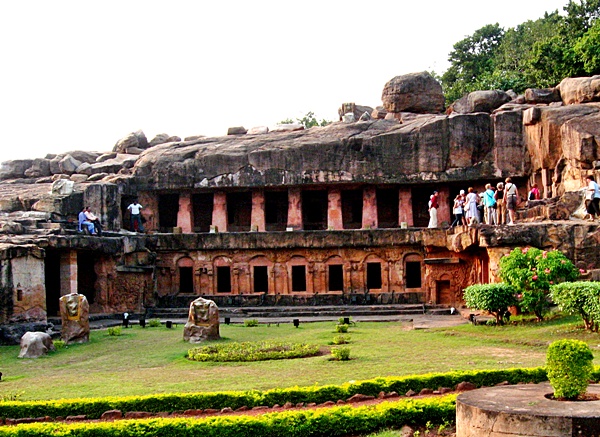
Ranigumpha (Queen's Cave, front view)
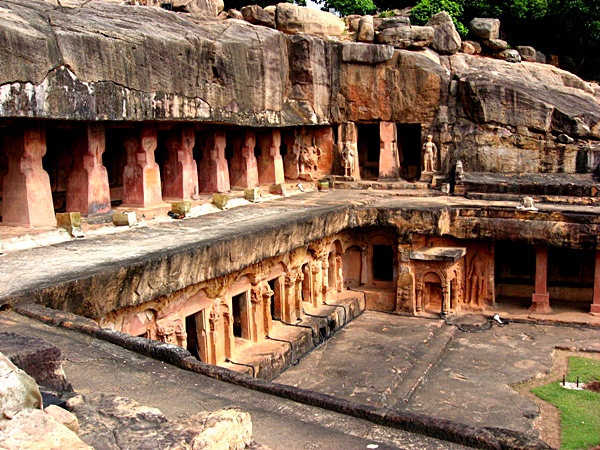
Ranigumpha (Queen's Cave, view from the second floor)
- Bajagharagumpha
Ccave with two massive built columns in front part, also inner columns are built, e.g. not carved of live rock.
- Chota Hathigumpha
Small Elephant Cave
Contains exquisite relief with elephants in both sides of front door.
- Alkapurigumpha
Alakapuri Gumpha
Double storeyed, part of columns is built. Contains sculpted ornaments and sculptures. Capitels of rock-cut pillars contain exquisite reliefs depicting elephants, some winged creatures, people.
- Jaya-vijayagumpha
double storied cave, some columns are rock-cut, some built.
- Panasagumpha
Simple cell with two built columns. Near this cave is another shelter with ochre paintings.
- Thakuranigumpha
Double storeyed cave, where some columns are rock-cut, some - built. Contains relief carving with winged animals.
- Patalapurigumpha
Roughly cut cave with two columns at verandah. Capitels of columns adorned with reliefs depicting winged beings.
- Mancapurigumpha
Sargapuri - Manchapuri Gumpha
Double storeyed cave. Lower floor has four columns. Several sculptures and reliefs, inscriptions.
- Ganesagumpha
Famous due to stone carvings. Contains two dwelling cells with low ceilings and a verandah with a bench in front. Famous relief of Ganesh on the rear wall was carved somewhat later - in this later time there were added large sculptures of two elephants in front of cave. Interesting scene with people in action, inscription. Contains also a carving with Jain Tirthankara.
- Jambesvaragumpha
Jamesvara Gumpha
Low cell with two plain door-openings, entrance has one column and two pilasters. Inscription tells that this was the cave of Nakyia, wife of Mahamade.
- Vyaghragumpha
Bagha Gumpha, Bagh Gumpha
Unusual, small cave temple - entrance part is shaped like enormous head of some animal (snake?) with the entrance door in the place of throat. Entrance portal is adorned with arched element, to the right from it - telling that this was cave of town-judge Sabhuti.
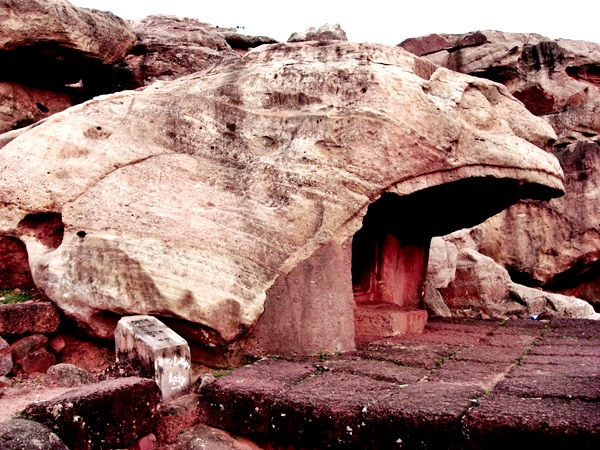
Baghgumpha
- Sarpagumpha
Unusual, small cave with adornment above the entrance.
- Hathigumpha
Elephant's Cave, Hati Gumpha, Hatigumpha
Contains carved chronicles of King Kharavela's reign - the famous Hathi Gumpha inscription. Hathi Gumpha is natural cavern supplemented with artificial structures - like columns of verandah. Besides the Hathi Gumpha inscription there are other pictograms and symbols drawn, including a footprint. In the front of Hathi Gumpha there is very unusual monument - hollowed boulder with entrance doors and windows.
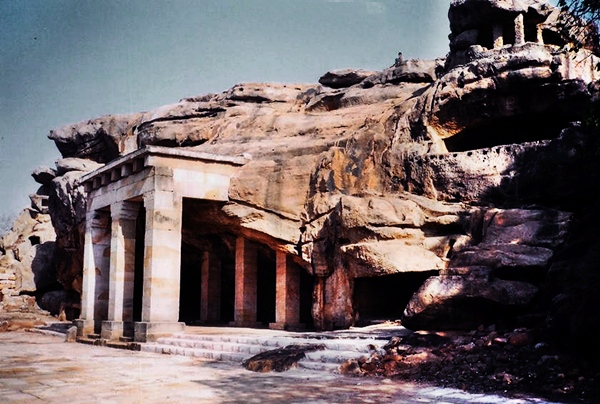
- Dhanagharagumpha
Entrance with two massive (unfinished?) columns, adorned with sculpture of door keeper.
- Haridasagumpha
Haridas Gumpha
Roughly cut cave, verandah with one column. Contains inscription.
- Jagammathgumpha
Jagannatha Gumpha
Roughly cut cave.
- Rosaigumpha
Rasoi Gumpha
Small cave with single entrance.
List of Caves at Khandagiri
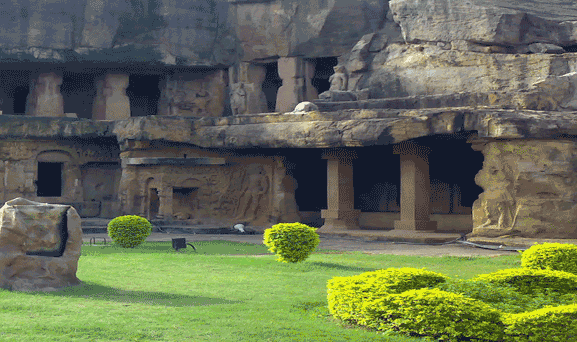
- Tatowagumpha No.-1
Got the name from depiction of parrots carved above the entrance arch. Cave is richly decorated, adorned with two door-keepers as well. Both entrances in the cells in turn are "guarded" by two bulls and two lions.
- Tatowagumpha No.-2
Veranda adorned with pilasters, capitels of pilasters contain exquisite carvings.
- Anantagumpha
Contains exquisite sculptures of women, elephants, athletes, geese carrying flowers.
- Tentuligumpha
Smaller rock-cut chamber, verandah has one column. Entrances in shrones adorned with portals.
- Khandagirigumpha
Double storeyed, roughly cut cave.
- Dhyanagumpha
Roughly cut cell.
- Navamunigumpha
Roughly cut cell, rear wall adorned with Jain Thirtankaras, Sasana Devis and Ganesh.
- Barabhujigumpha
Adorned with Jain Thirtankaras and Sasana Devis. Rock-cut footprints.
- Trusulagumpha
- Ambikagumpha
- Lalatendukesarigumpha
Lalatendu Keshari Cave
Rear wall adorned with reliefs of Mahavira, Parsvanatha, Jain Thirtankaras.
- Unnamed
- Unnamed
Rather an overhang - possibly some columns or walls destroyed.
- Ekadasigumpha
Simple cell.
- Unnamed
Sculptures in the Caves
King Kharavela and Queen Simhapatha (Ranigumpha)
Battle scene (Ranigumpha)
Jain Idols at Khandagiri Caves
Paneel of Tirthankaras and protector goddesses
Standing Tirthankaras
